After Christine waved goodbye to us at the train station in Les Sables-d’Olonne, Emma and I spent the following ten hours in transit until we arrived in Lyon, our penultimate destination. After a brief layover in Nantes—just enough time to eat lunch in the wondrous Jardin des Plantes—we took the only train per day to Lyon that doesn’t stop in Paris in favor of a more leisurely trip through the French countryside. Sure, we could have reduced our travel time by an hour or two had we stopped in the Île-de-France, but having the chance to traverse the width of the country made for a really spectacular journey. We covered a wide territory that includes Tours—the city in France where what is arguably the purest form of French is spoken—and came within a few kilometers of Vichy. I benefited from this considerable trek by finding the inspiration to begin writing a novel. Whether or not I one day complete it remains to be seen, but one thing’s for sure: that exercise in creativity was only possible due to the tranquility of central France.
The first thing that greeted us as we stepped out of the Metro station in the old city of Lyon was the seashell well-known to pilgrims in Europe that shows that they’re on the right path to Santiago de Compostela in Spain. The Camino de Santiago is a yearly pilgrimage that concludes in—you guessed it—Santiago. According to Google Maps, it would take twelve full days, without stopping to eat or sleep, to walk from Lyon to Santiago, which speaks to how extensive that network has become.
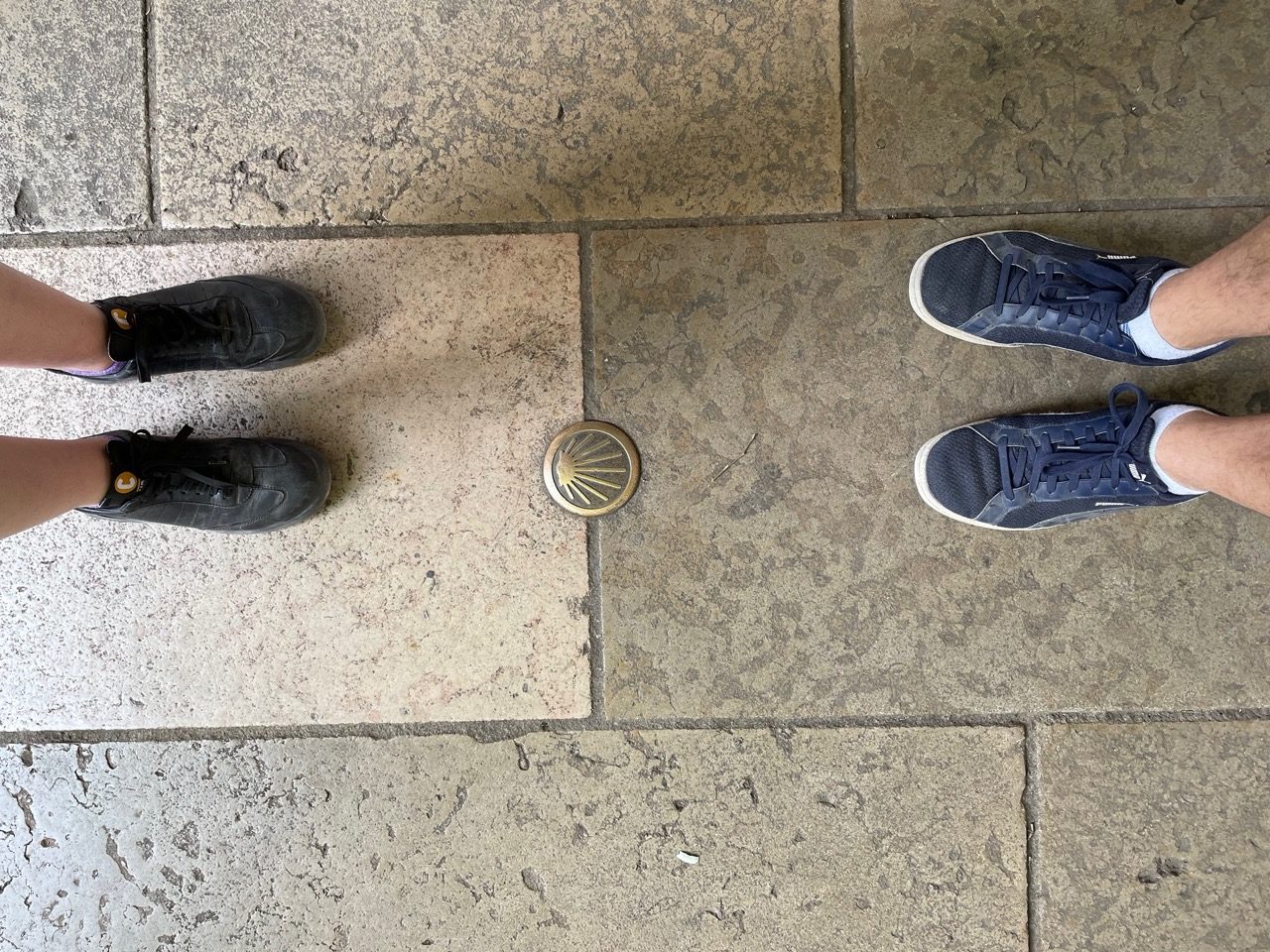
We had the pleasure of staying in a 14th-century apartment during our time in Lyon, though it did have all of the modern furnishings and amenities that one would expect of an Airbnb. Every time we labored up the four flights of the spiral staircase, we exclaimed to one another—between our gasps for breath—about how people had been doing for 700 years exactly what we were doing then. We’ve certainly gotten stronger over the past few months, but those stairs had kicked our butts by the time we’d reached the top floor.


Emma and I spent plenty of time wandering around Lyon and taking in the scenery. As a city that has not two but four sides—two rivers, the Rhône and the Saône, pass through it—Lyon has plenty of bridges to cross and streets to explore. We also stumbled across several large murals that scale whole buildings, such as the Mur des Canuts located in the artsy Croix Rousse neighborhood in the north of the city.
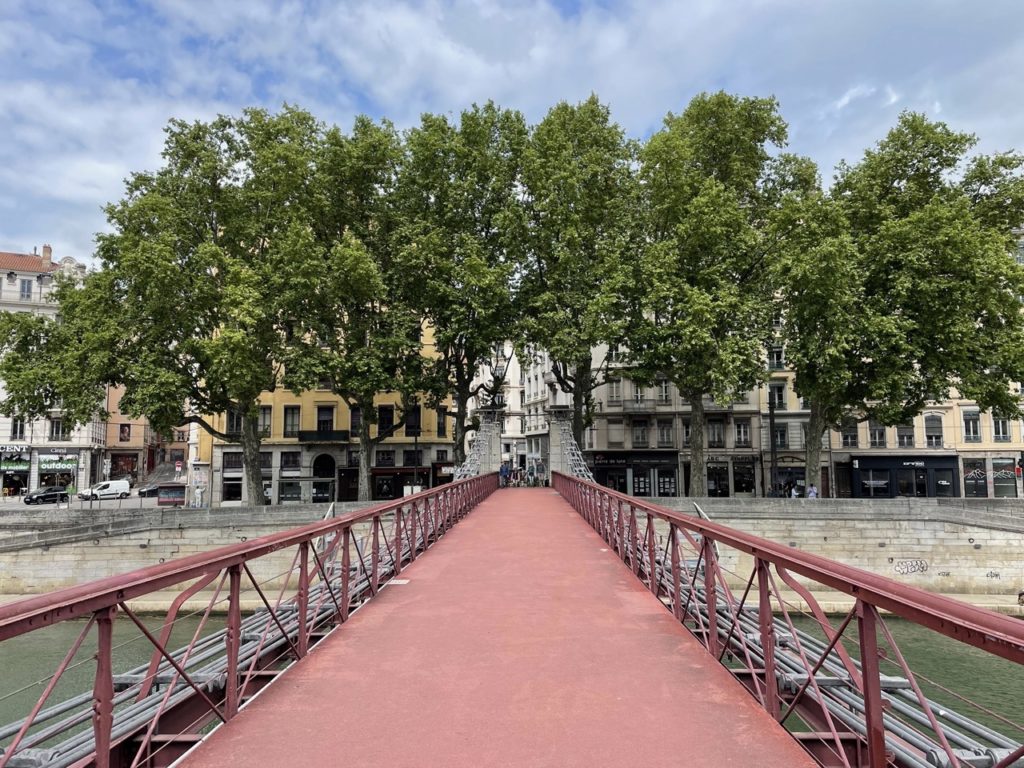


On the subject of canuts, or silk workers, we also visited La Maison des Canuts, a museum that both explains how silk is made as well as the history of silk production in Lyon, including both industrial advancements and one of the first organized labor strikes during the first half of the 19th century. I had no idea that, in order to harvest the silk produced by silkworms, the cocoons must be boiled, thus killing the chrysalis. The museum fits a surprising amount of displays and information in its small space, and with an entry fee of just €1 per person, it shouldn’t be missed.
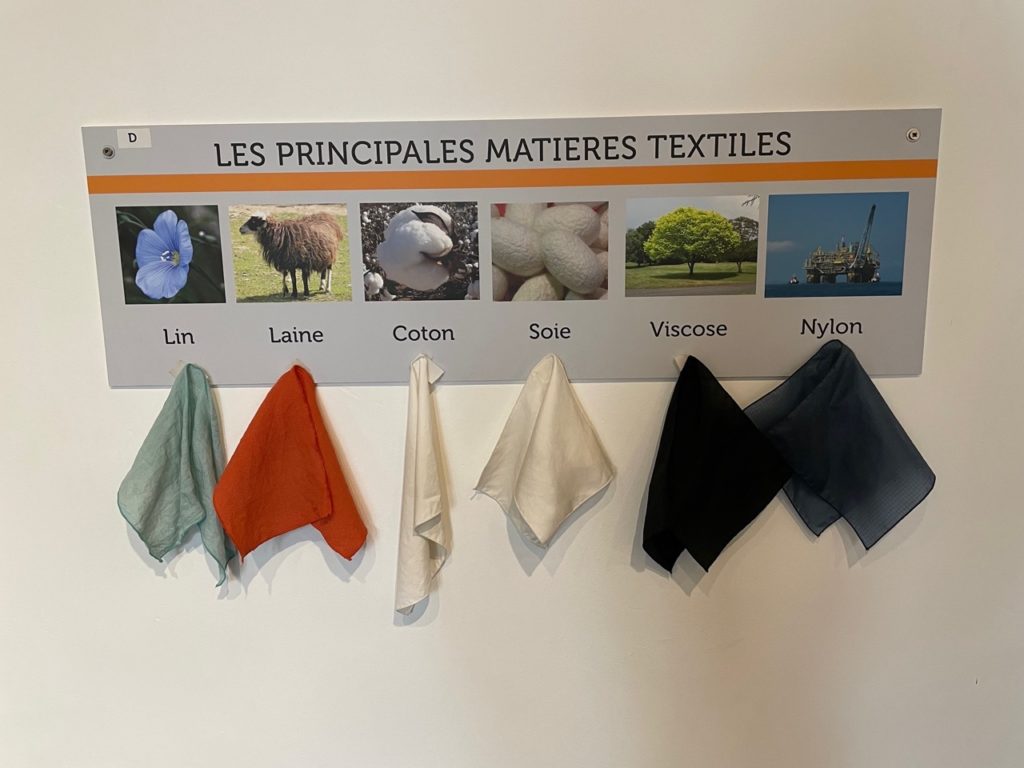

The Parc de la Tête d’Or is a marvelous park. It has a very large lake, creatively named the Lac de la Tête d’Or, and a terrific gate called the Porte des Enfants du Rhône. It has rose gardens, rowboats to rent, and even a little train to ride when the weather’s nice. Emma and I spent a couple of hours walking around the lake and enjoying the flora and fauna of this urban oasis.
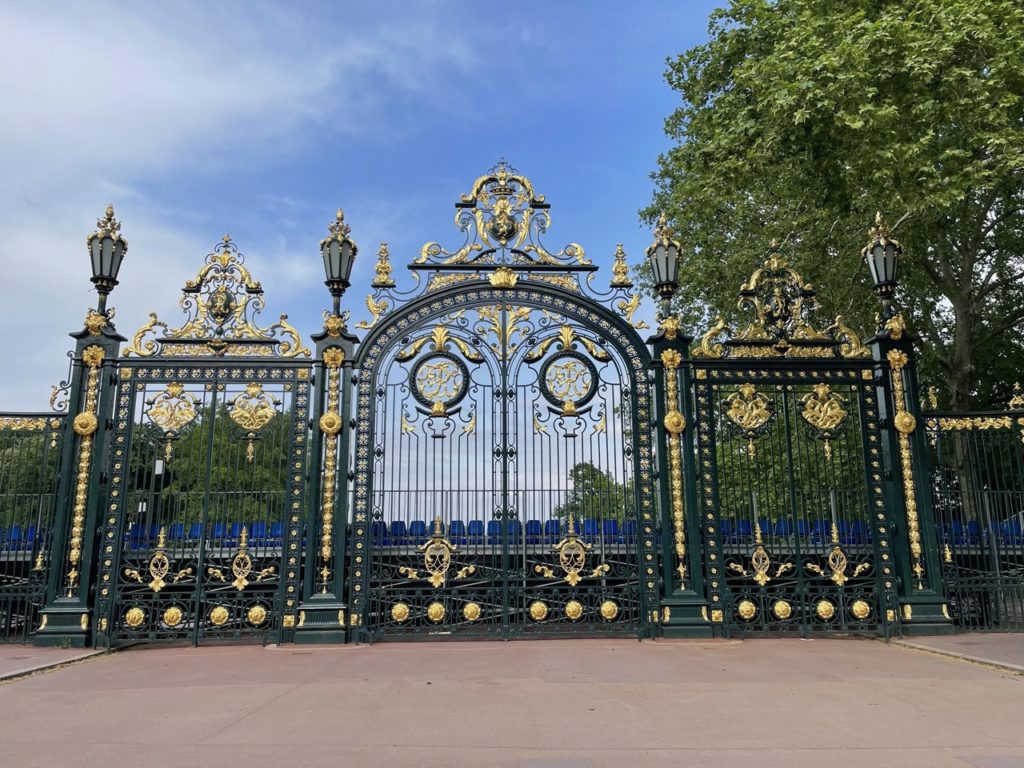
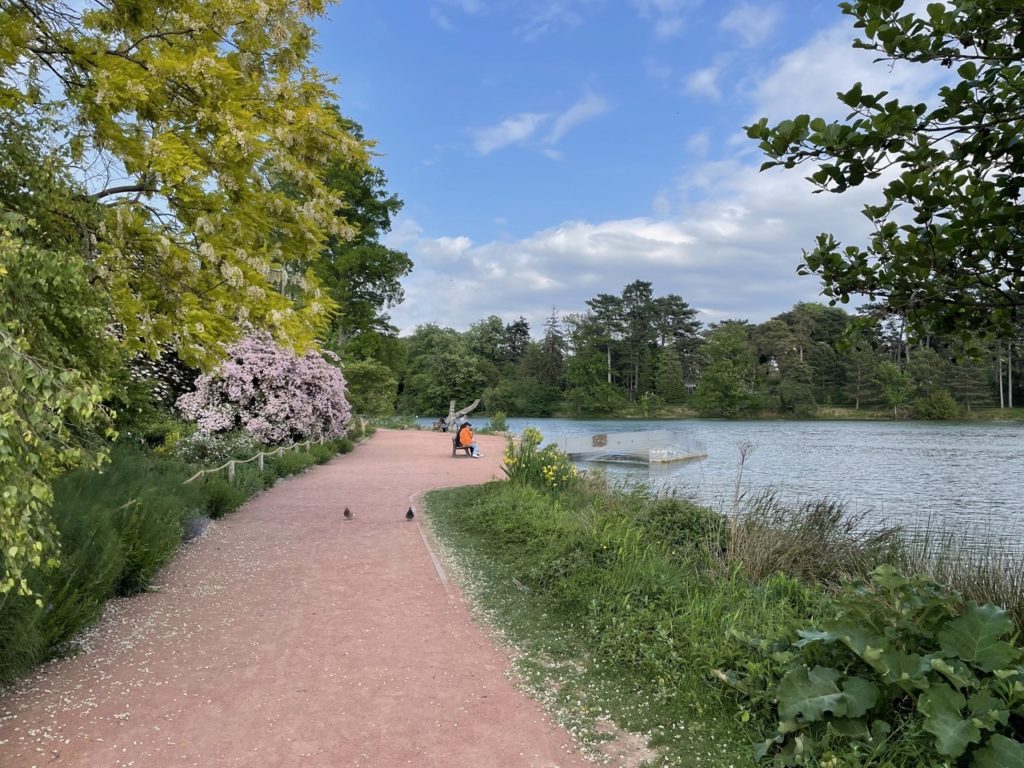
Vieux Lyon looks exactly how you might imagine the old city center of any European town: the streets are narrow, they curve ever so slightly, and are paved with cobblestones. There are also plenty of ice cream shops for tourists, such as Terre adélice, which was located right across the street from our Airbnb. Their ice cream was delicious and often, Emma and I would have to cut through the long lines of people waiting for a scoop in order to begin (and return from) our daily expeditions.
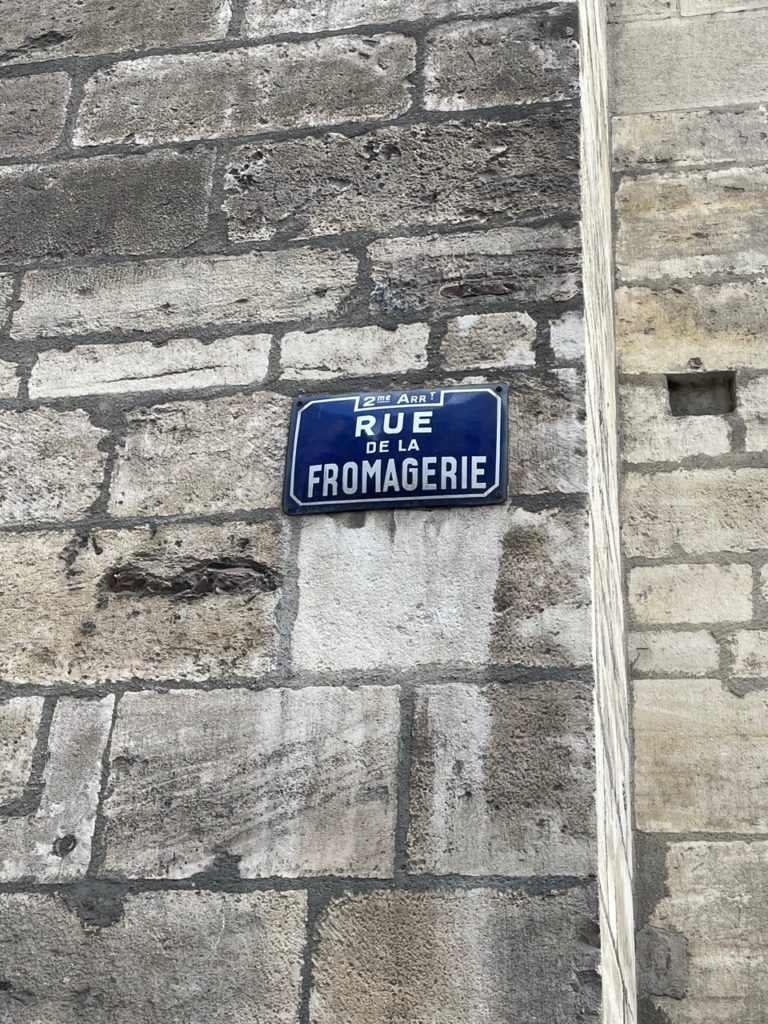
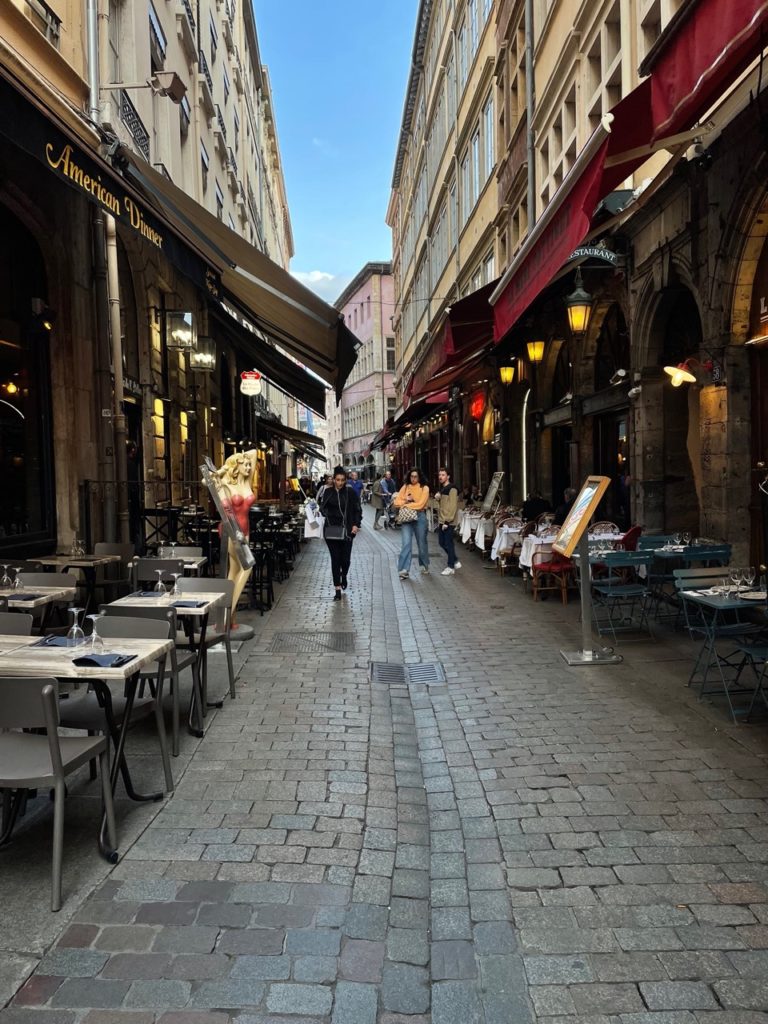
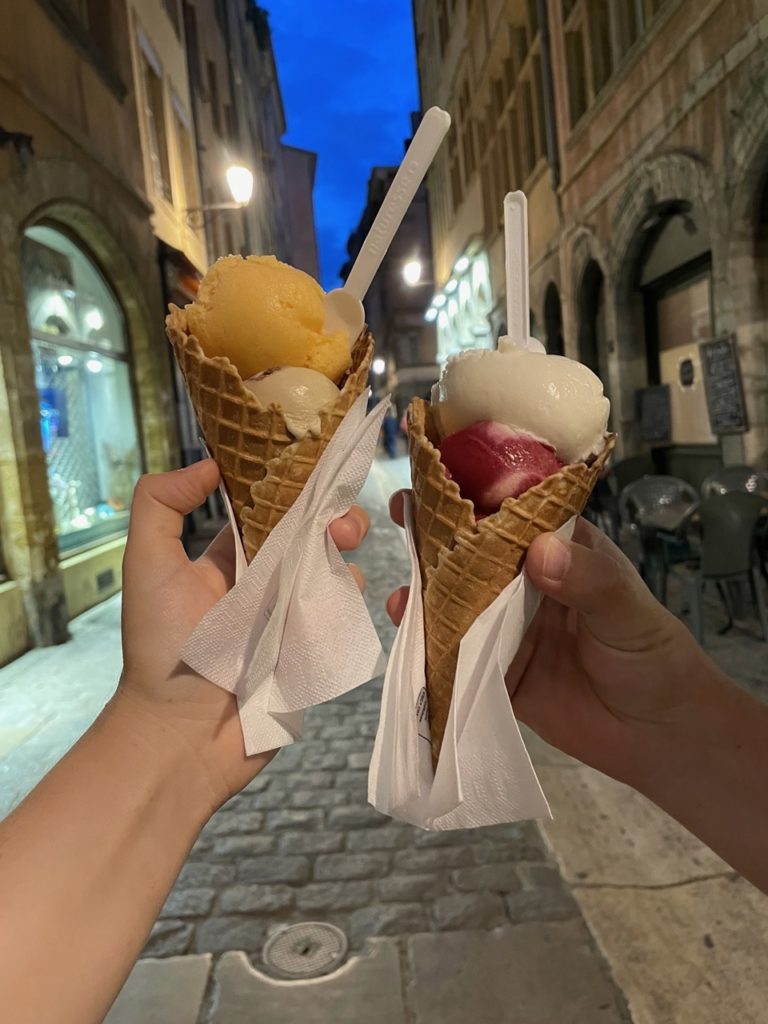
Something that I’d taken for granted during my year abroad in Spain was the plaza and the purpose that it serves. Simply, I’d not thought much of them, though to be fair, the famous Plaza Mayor in Madrid has many restaurants for tourists and the even busier nearby Puerta del Sol serves as an important transit hub. In the photo on the right, you can see the Place des Terreaux, around which sit the Hôtel de Ville (city hall) and the Musée des Beaux-Arts de Lyon. The Subway behind the fountain might be the least culturally-relevant storefront there, but by and large, I think that it’s a very well-utilized space.
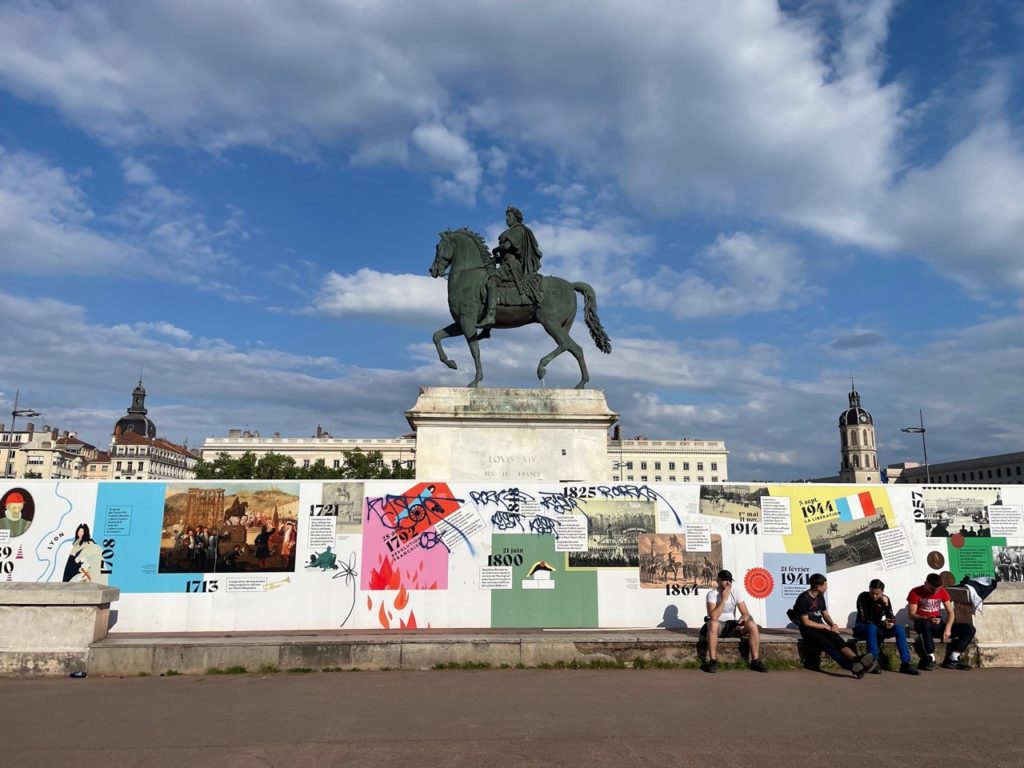
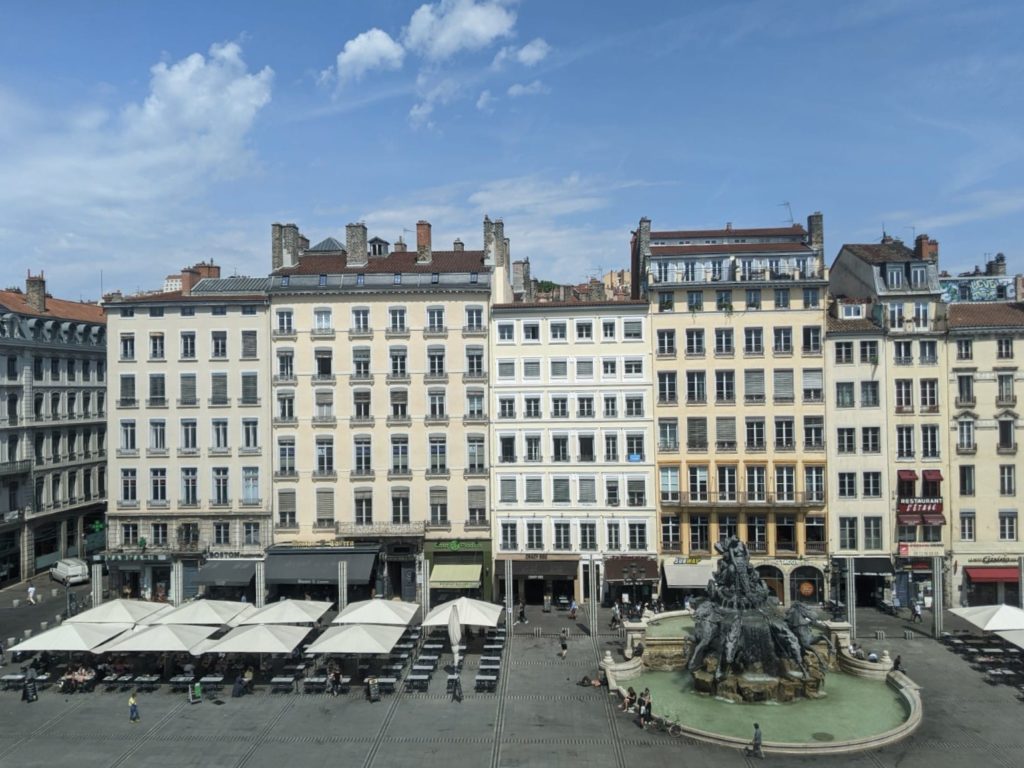
In Lyon, however, the place to be (ha) is Place Bellecour, a seemingly endless expanse of land with a statue of King Louis XIV on horseback in the middle (above, left). It’s a central landmark in the city, though Emma rightfully pointed out that there were no tables waiting for hungry tourists in its midst nor any makeshift flea markets set up, at least when we were there. Sure, there’s a Metro stop in Place Bellecour—and an important one, too, as it’s the transfer point for two lines—though it’s only accessible from its northeast corner. So, what gives? Is there something that we’re missing about the more than 62,000 square meters of unoccupied space in the middle of Lyon? We just don’t get it. Let us know what you think in the comments 🙂
Finally, the food! I can’t believe that I’ve droned on so long about unimportant things like silk and the organization of outdoor spaces before mentioning anything about food! Emma told me many times, bubbling with excitement for the good food to come, about how Lyon is considered to be the gastronomic center of France before our arrival. And indeed, the food that we ate there was nothing short of delicious. From the Boulangerie Saint Paul, photographed several rows above behind a slice of quiche in a box and a square of pizza, to the fantastic Thai food at Les Petits Siamois (left) and the savory galettes and dessert crêpes at Le Marélie (center and right, respectively), we ate well. But we were in Lyon for almost two weeks and it’s impossible to eat such rich, dense food every day, so we must again give credit where credit is due: Too Good To Go and a welcome newcomer, TheFork, by TripAdvisor.
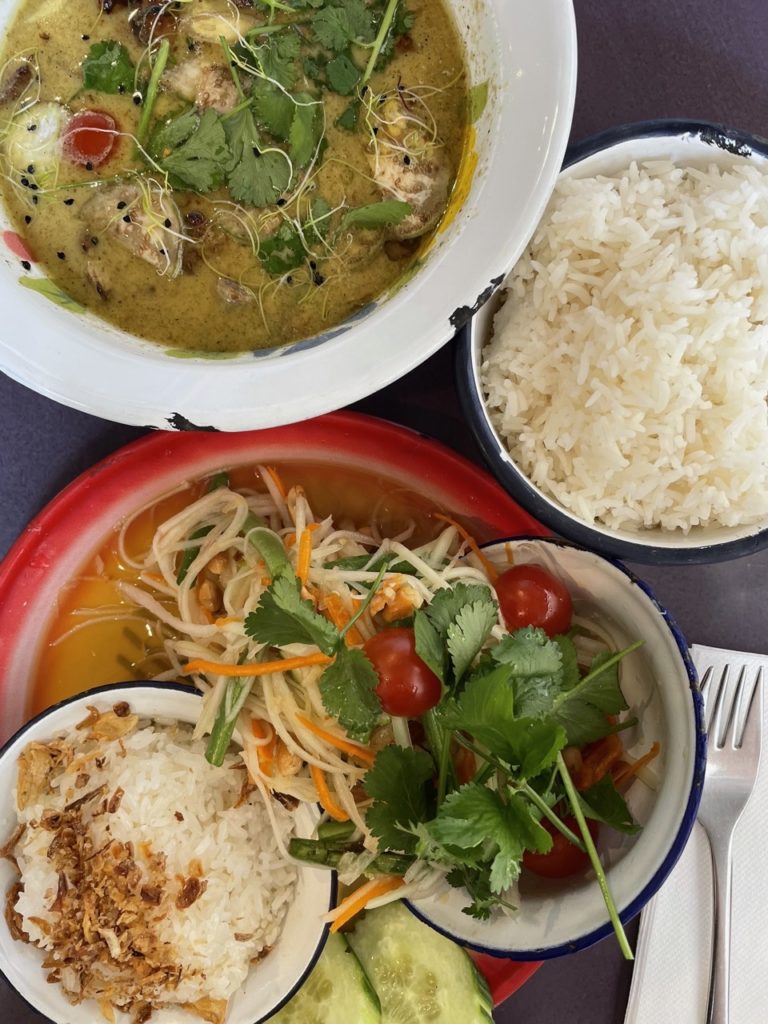


As you know, faithful reader, Too Good To Go allows users to buy food that would otherwise be thrown away by their (sometimes) favorite restaurants and supermarkets at reduced prices. We picked up several “surprise bags” from Boulangerie Saint Paul, which contained some assortment of squares of pizza, sweet baked goods, and once, a hunk of homemade sourdough bread as large as a football. We also went a few times to Cherryne and Pef’s Bake Shop, a local bakery and lunch spot on the island in between the Rhône and the Saône, and Café Joyeux, a small chain based in France that “trains and employs people with cognitive disabilities.” From both restaurants, we enjoyed sandwiches, a strangely large amount of lentil-based dishes, and little sweet treats.
Emma found TheFork after we’d arrived in Lyon and immediately, looking for new restaurants and making reservations became our (though she says my) favorite pastime. Purchased by TripAdvisor in 2014, TheFork currently operates in Europe and Australia—sorry, everyone in the US—and offers users the ability to make reservations at restaurants and receive 20%, 30%, or even 50% discounts on their meals. We’re still not sure how restaurants make money from their partnerships with TheFork, but it’s been a game-changer for us (and our wallets).
One of the city’s most recognizable symbols is La Basilique Notre Dame de Fourvière, which sits perched high over the old city of Lyon. Construction began in 1870 and the basilica was consecrated in 1897, but work wasn’t officially completed until 1964. Honestly, though, I’m surprised that they were able to finish building in under a century because the hike up the hill was work enough. Absolutely brutal. On the left, you can see a beautiful shot of Lyon, but when Emma took that photo, we had already begun to sweat buckets and had no idea that we were only halfway from reaching the peak. At least the second half of the ascent was kinder and consisted largely of switchbacks, but combined with the intense heat, we would have been very happy to have taken a nap upon reaching the summit.

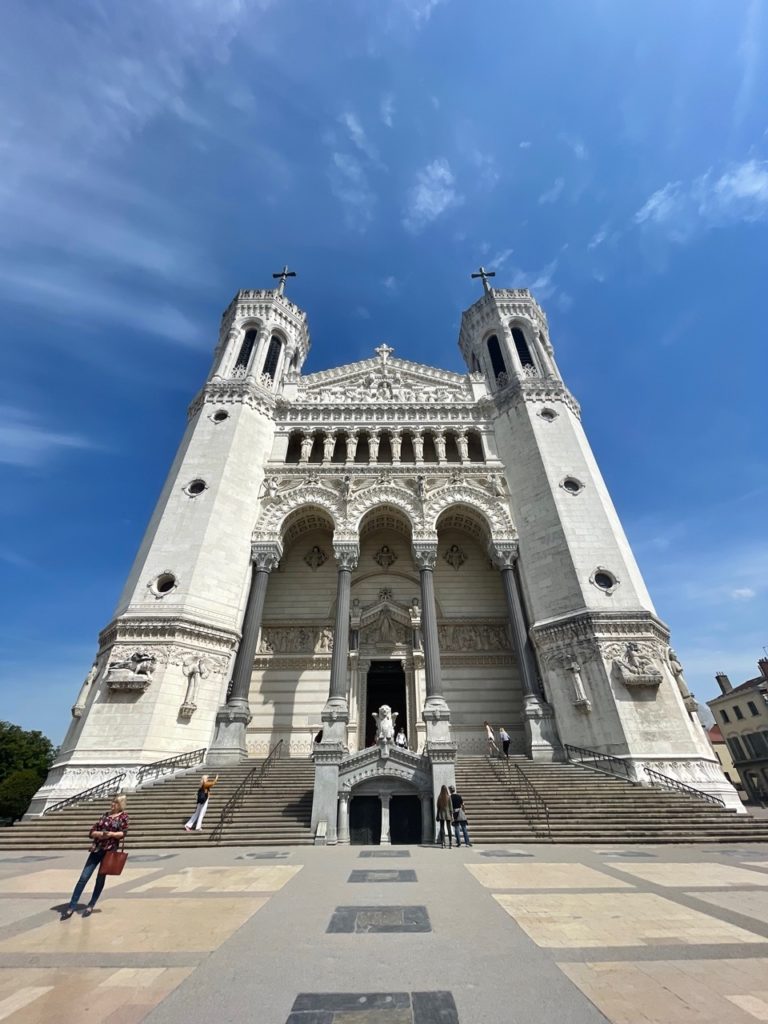
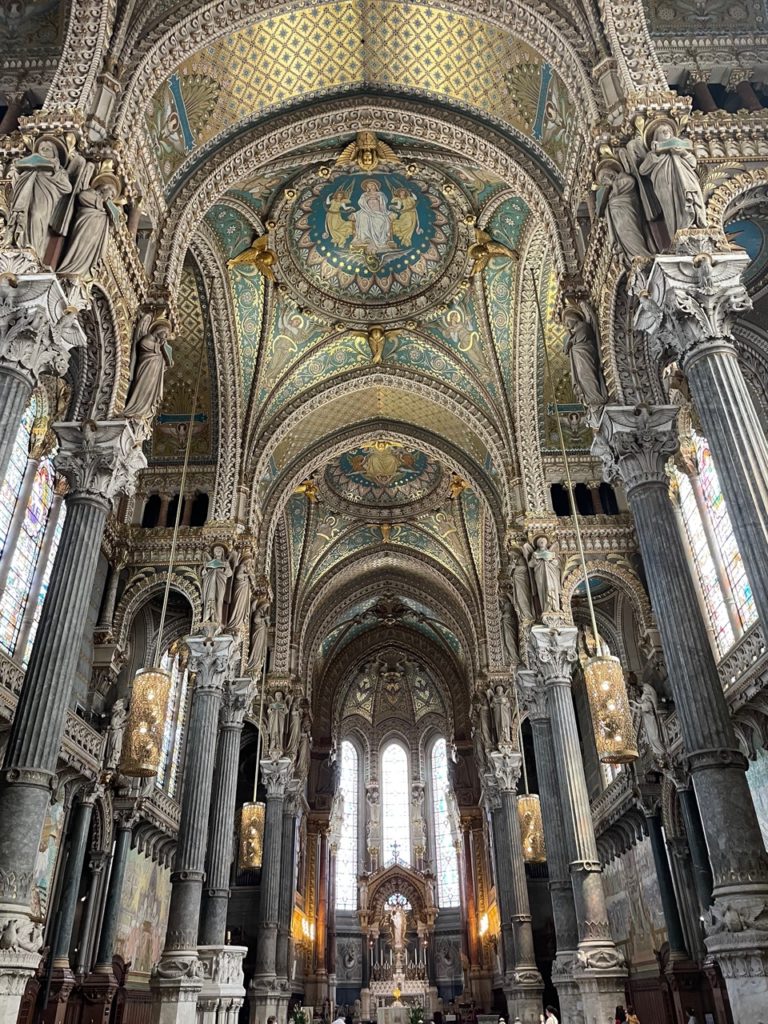
The Fourvière is the name of the hill on which the basilica was built, hence its name, but it was also the site of the Roman settlement closest to Lyon called Lugdunum. (Over the centuries, the latter name morphed into the former.) We had the pleasure, after resting for a while in the shade with a beer, of exploring the ruins of the Roman amphitheater, now called the Théâtre Gallo Romain de Lyon. We saw the construction of temporary structures and learned that the amphitheater is still used today to seat around 4,500 attendees during the summer Nuits de Fourvière festival. No matter how many Roman ruins I’ve seen, my mind is blown each time to think that people inhabited these same spaces two millennia prior. Heck, it’d be so cool to go an ancient Roman hippodrome to see some ancient horses race and make ancient friends!

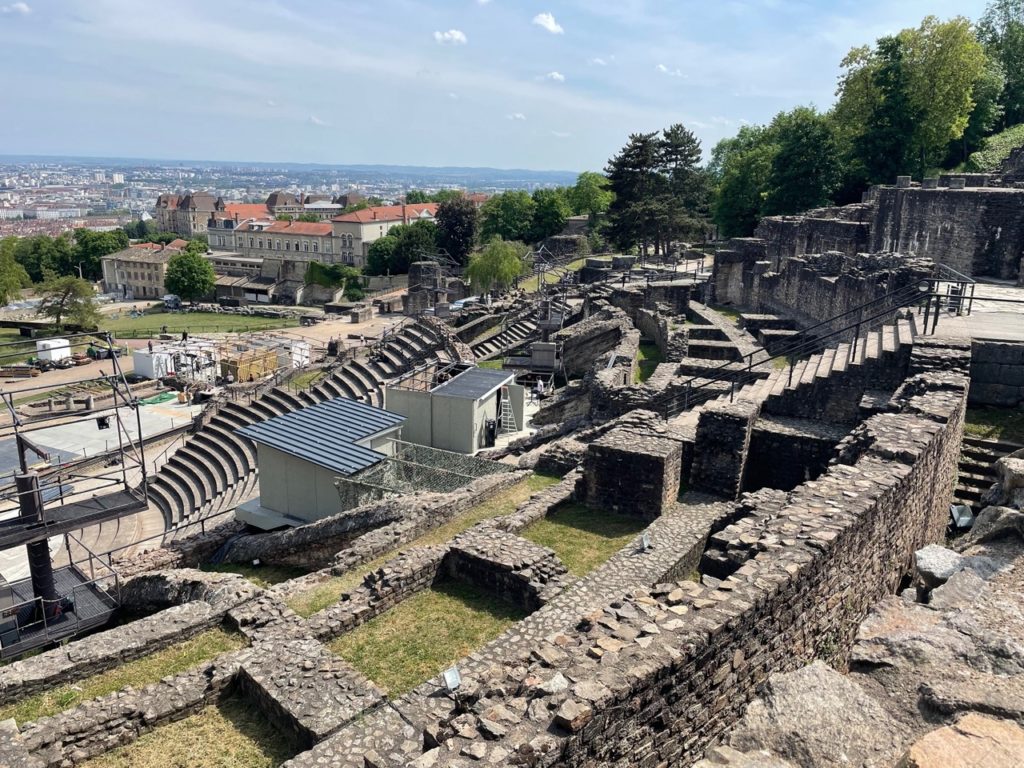
As we perused Google Maps one morning to see what cool and interesting sights and attractions we had yet to find near the Airbnb, Emma spotted the Musée Cinéma et Miniature, a private museum with exhibits of both miniature, hyper-realistic everyday scenes (see below) as well as movie props and special effects. Emma was most intrigued by the opportunity to peer into the miniature scenes and I found myself entranced with the sheer quantity of movie props that the museum displayed. Everything from silicone prosthetics to costumes to puppets was there in what looked from the exterior to be a nondescript building in Vieux Lyon.

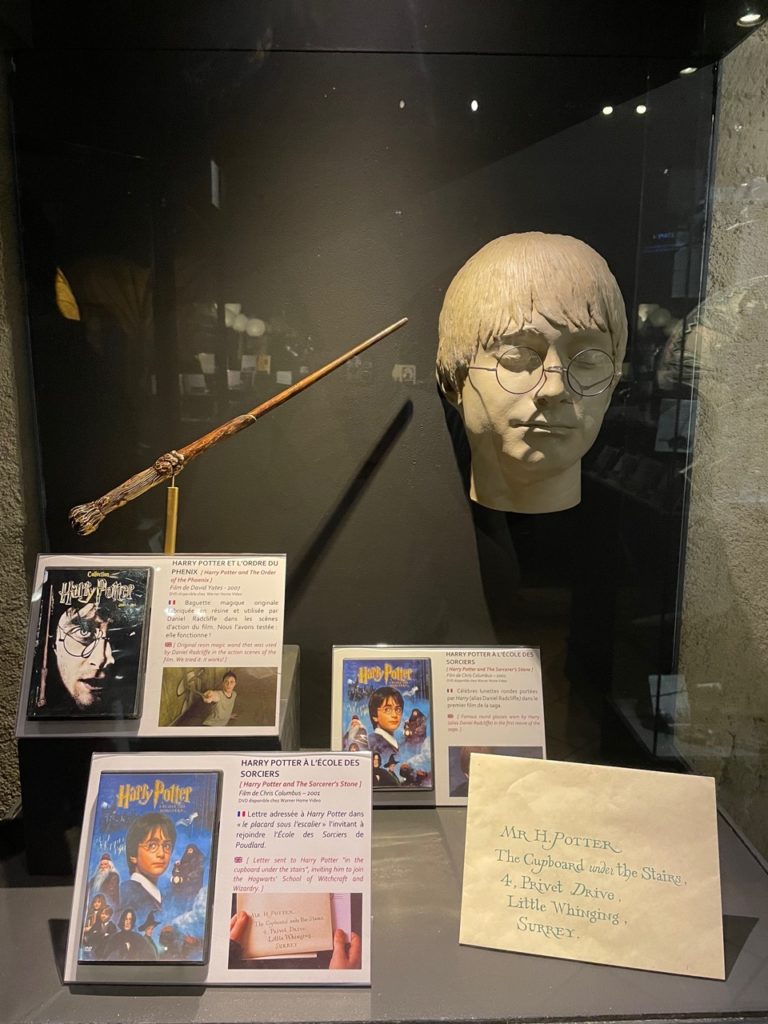

It’s hard to believe, but these miniature scenes were between six and twelve inches tall!
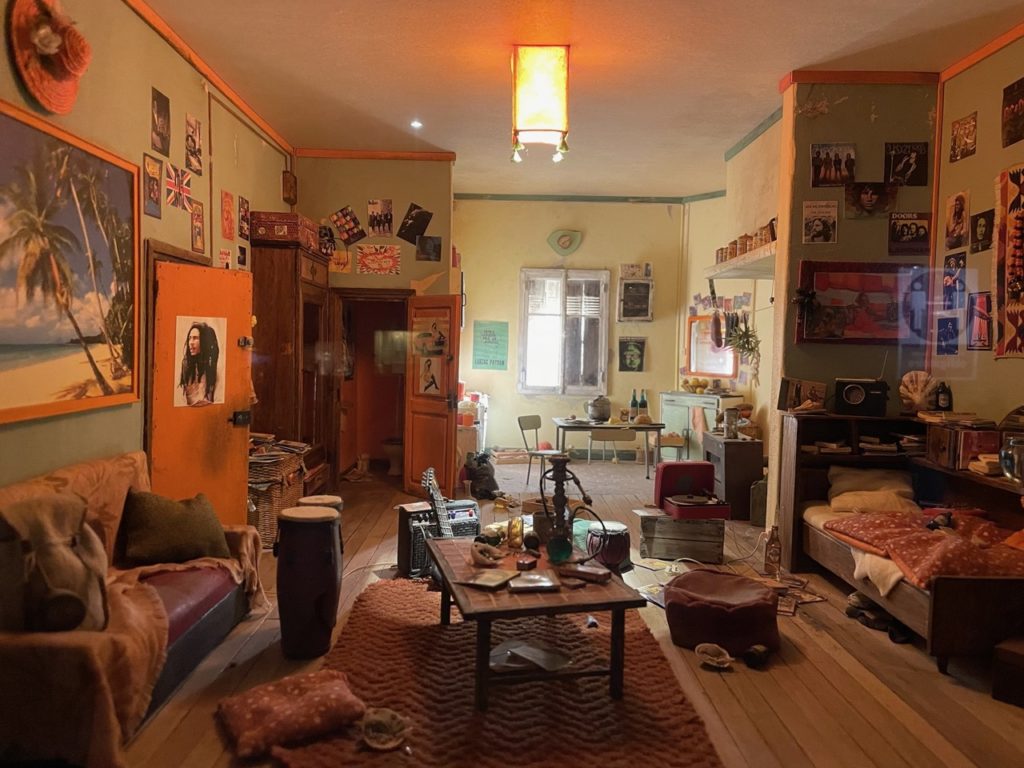
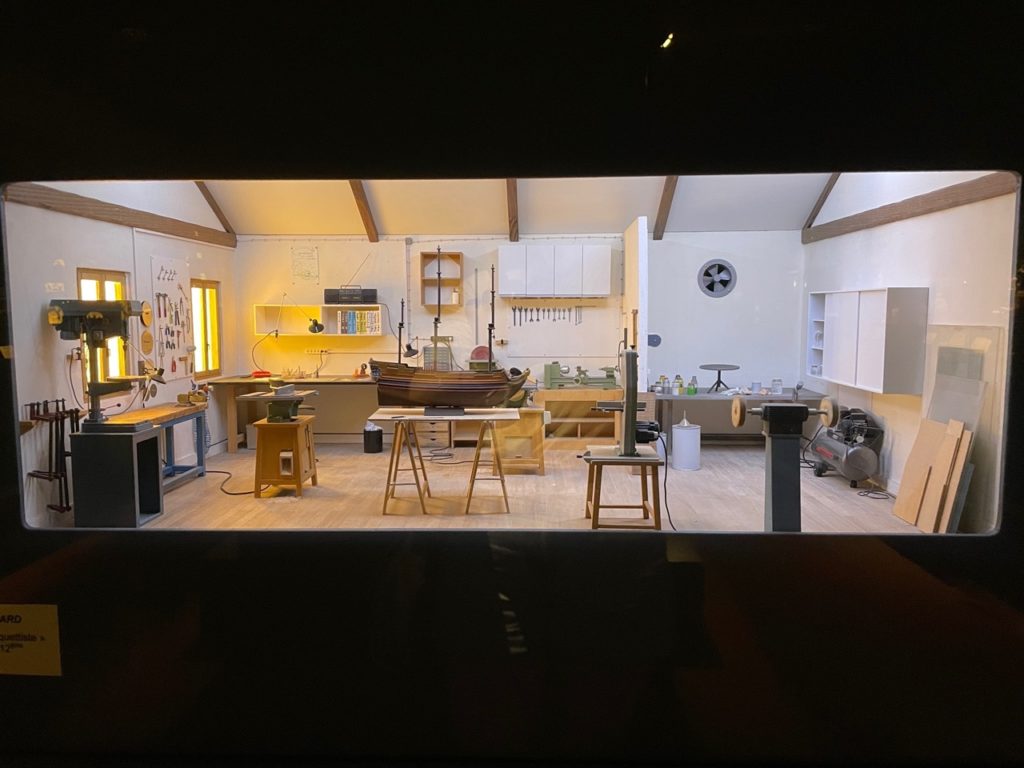
We also spent an afternoon walking through the collections and grounds of the Musée des Beaux-Arts de Lyon. My favorite (and most unpleasant) work that we saw was The Ricotta Eaters, a 1585 painting by Vincenzo Campi. The explanation of symbolism available on Wikipedia is grim, as “[t]he ricotta placed on the tray appears to form an image of the skull, symbolizing memento mori, a reminder of death, in an atmosphere characterized by excess and abandon.” While I don’t see the skull myself, I do know how to impersonate the armor of a knight on horseback when I see one.

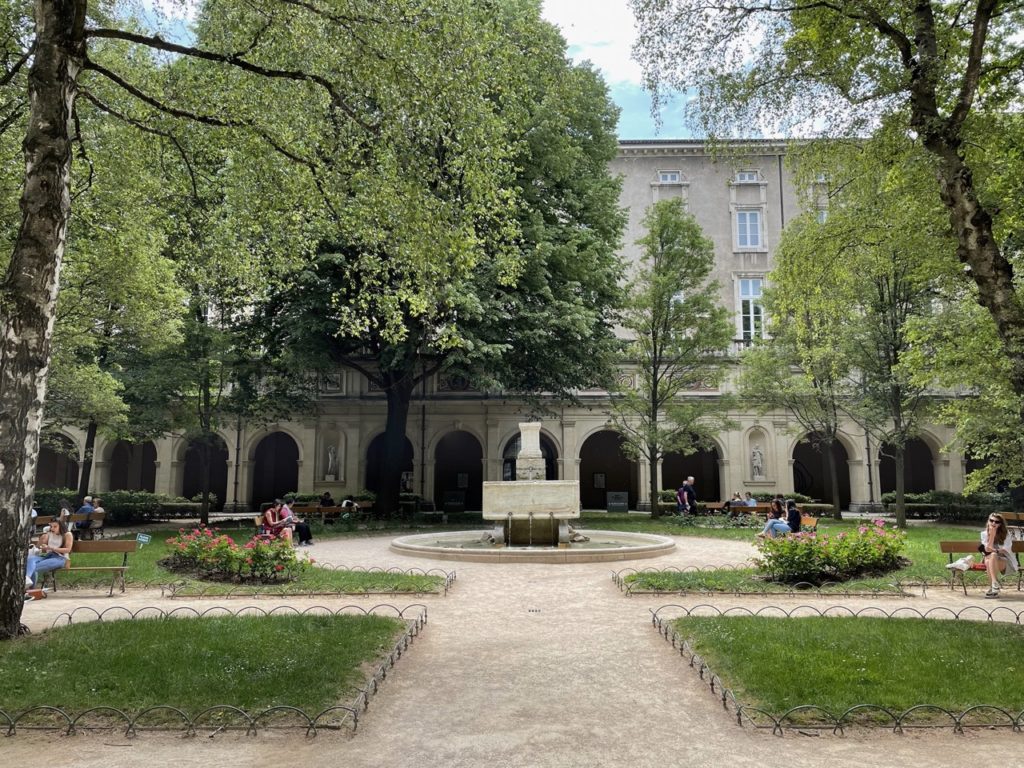
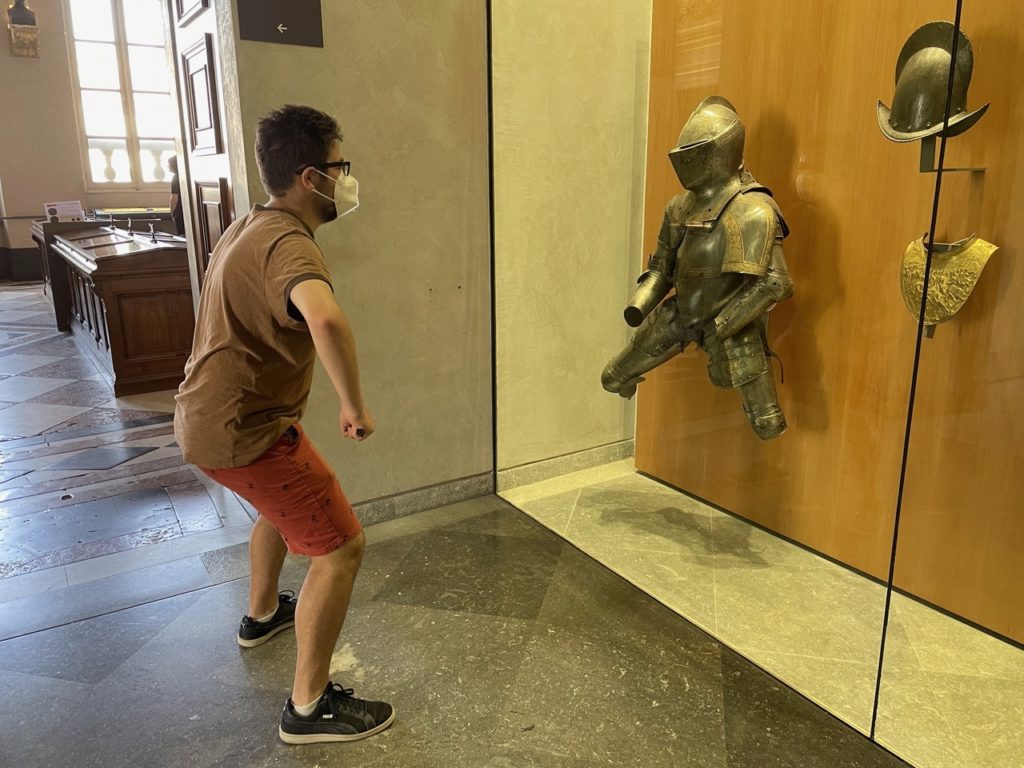
After visiting the museum, Emma and I walked a few minutes to Le Bouchon des Cordeliers for our eagerly-awaited reservation. Ah, the bouchon. It’s a Lyonnaise staple and what gives Lyon its reputation for being the best place in France for food. Or maybe it doesn’t, but that’s at least what I’ve heard. To say that the food we ate was scrumptious might be a bit of an overstatement, but it was indeed yummy, distinct, and pleasing to the soul.
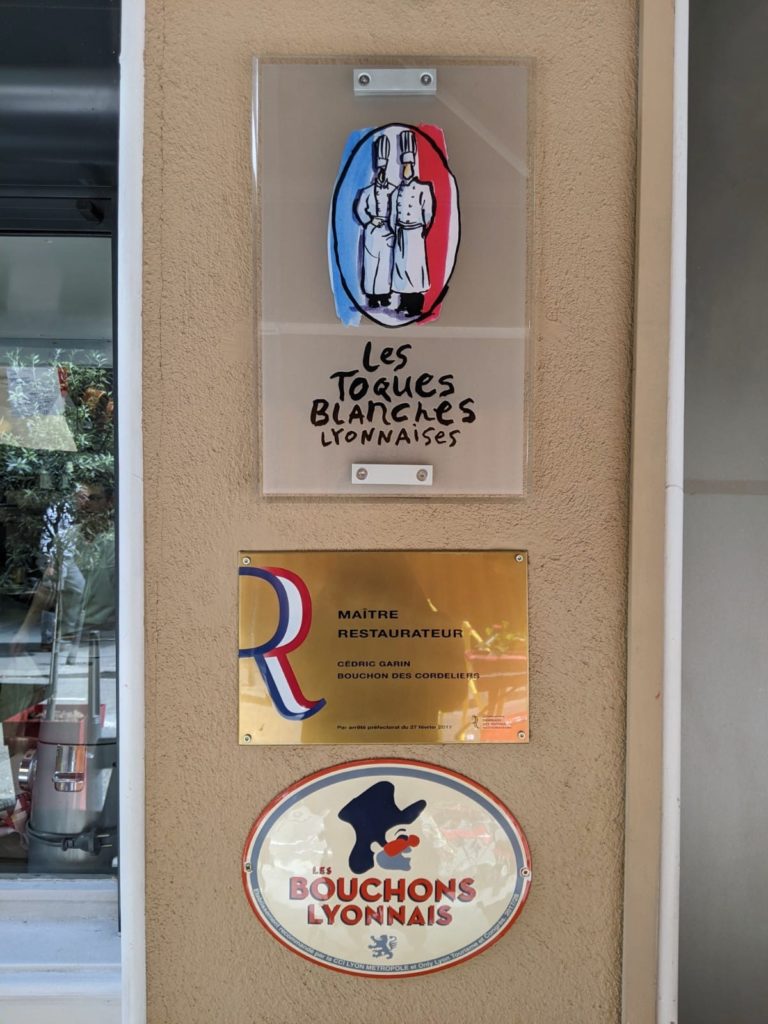
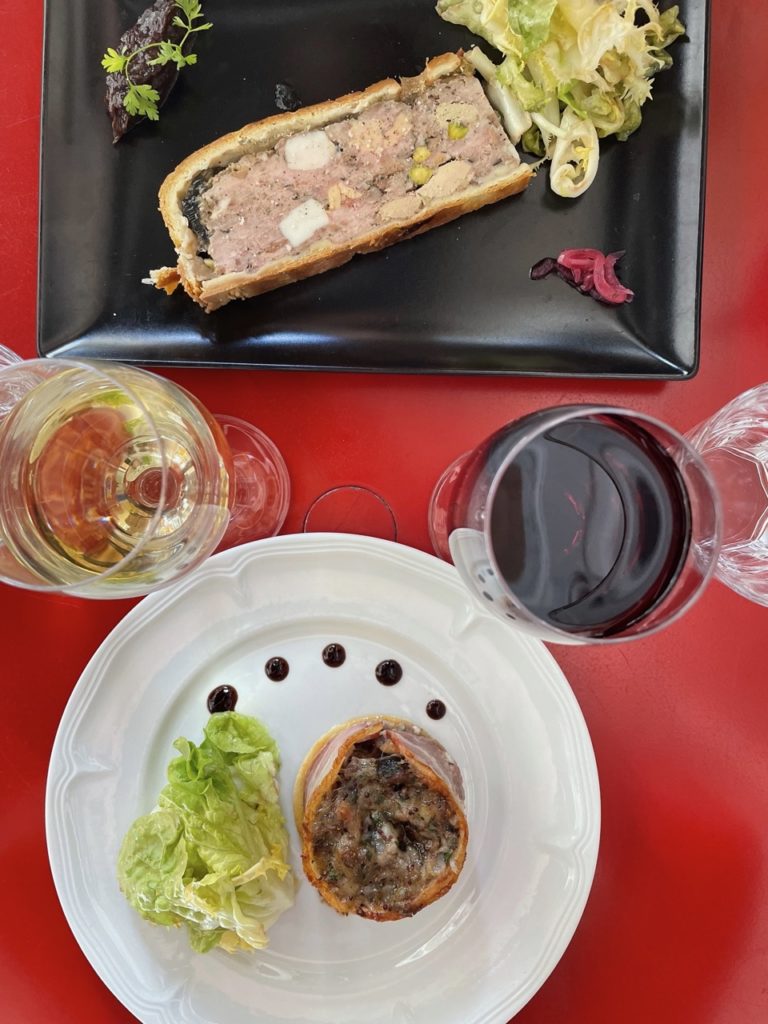
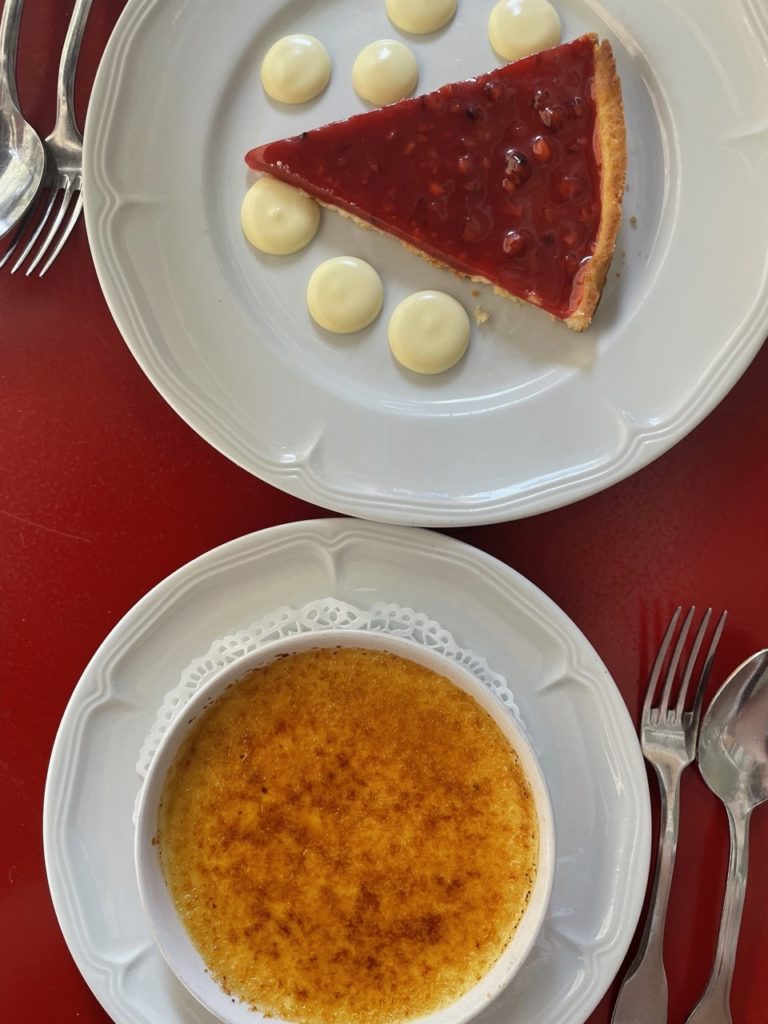
The bouchon originates, like many things in Lyon, from the lifestyle and culture of the canut (recall: silk worker). Supposedly, they started as small taverns at which canuts stopped for food on their ways to and from work and evolved into familiar establishments where the focus is more so on hearty than pretty. As a word, bouchon means cork or wine stopper, in reference to such images that were present on the signs of the first iterations of that style of restaurant.
Oh me! Oh my! What’s this? How’d we get to Switzerland? Yes, it’s true: Emma and I took a day trip to Geneva to punctuate our time in the region. Below, you’ll see the Jet d’Eau—literally, the Jet of Water, though it’s much more impressive from up close—and L’Horloge Fleurie (the Flower Clock), two important symbols for the residents of the city as well as, apparently, certain monks.

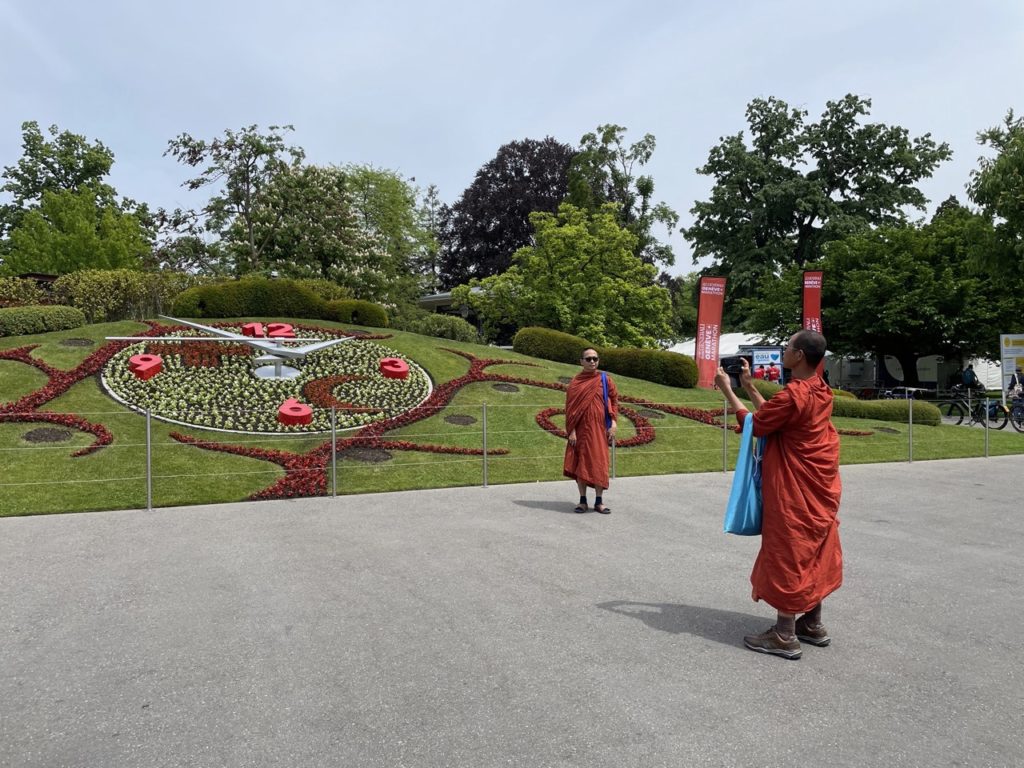
We had no predetermined plans for the day, so our first accidental stop was at the Cathédrale Saint-Pierre de Genève and its archaeological site. It was a very warm day, so we were happy to find both shelter from the sun and an interesting way to spend some time. An audio tour of the underground ruins revealed the extent of the evolution of both architecture and Christianity where we stood, a history that we found fascinating, if not also a little bit confusing.
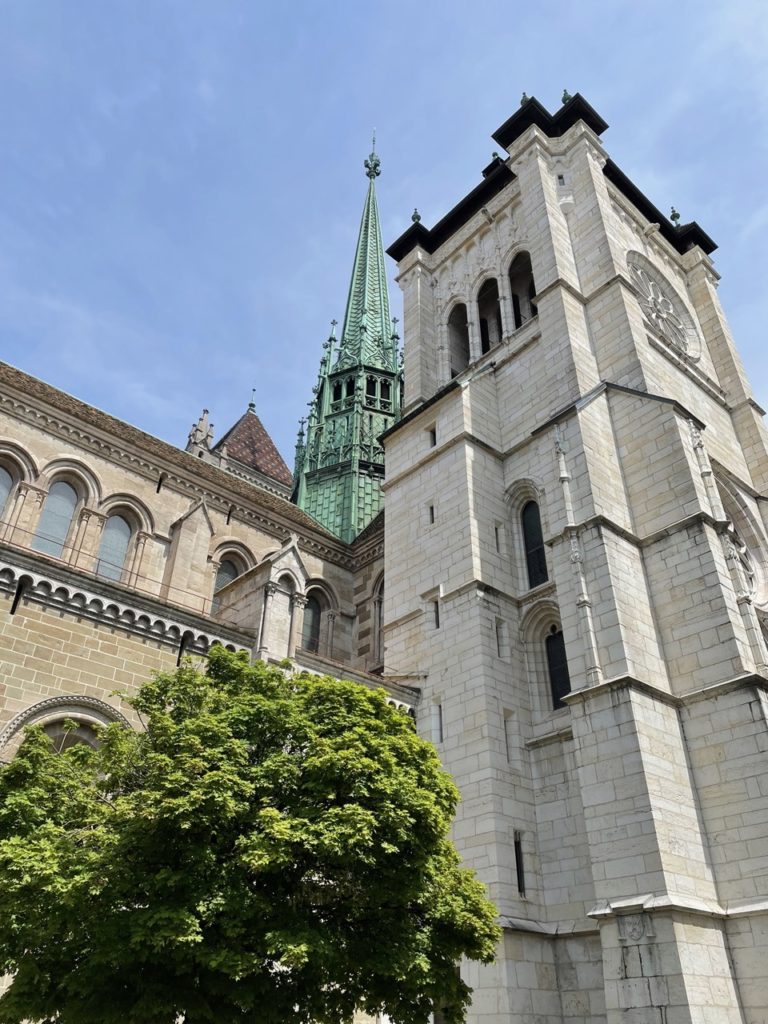

The issue for us was that the history that we learned in perhaps an hour and a half covered around two millennia. The last stop on the audioguide began with something like, “Perhaps you found this tour a little bit difficult to understand.” It felt like an odd but refreshingly honest way to end a tour, and indeed, our virtual tour guide was right. Two thousand years is too long an amount of time for the human brain to fully comprehend, but no one can doubt that it’s impressive. For example, something that stuck with me is how a chieftain of the Allobroges, a Gallic people that lived in the region during the Iron Age and the Roman period, is buried several meters beneath the exact placement of the modern altar in the Cathedral. We saw his bones that were uncovered during the excavations on the site. Is his tomb ultimately the reason for the Cathedral’s current placement? Yes, that’s what the archaeologists think. It’s wild, this history, and how it often has such strong implications for and relations to the current shape of the world.
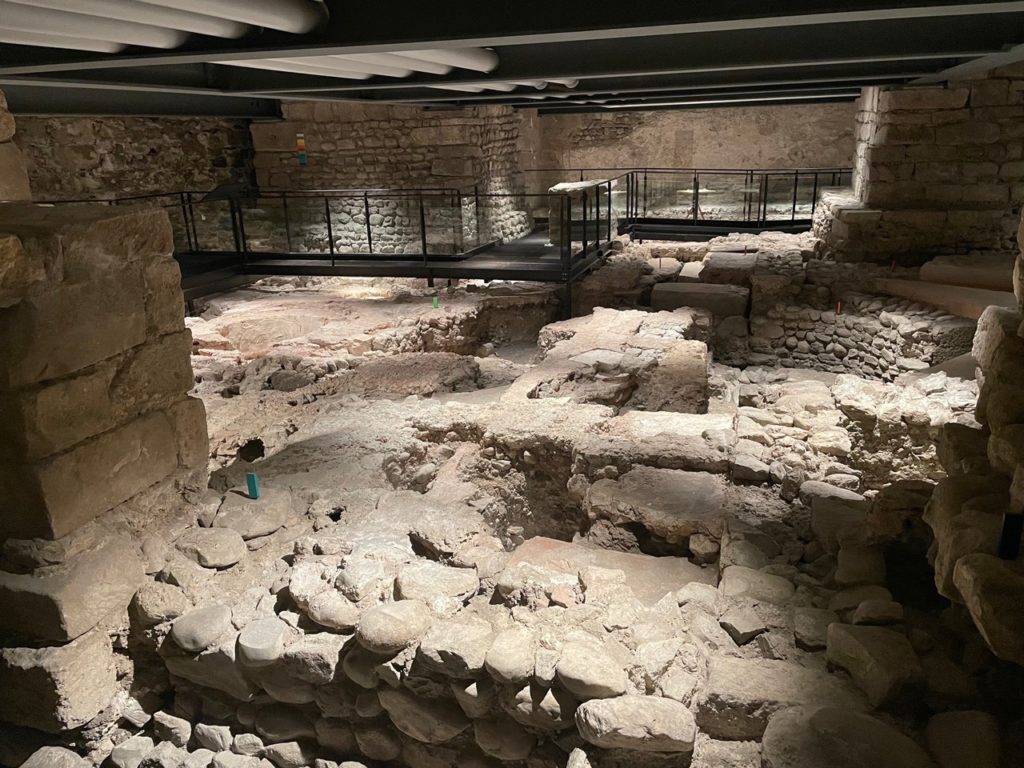
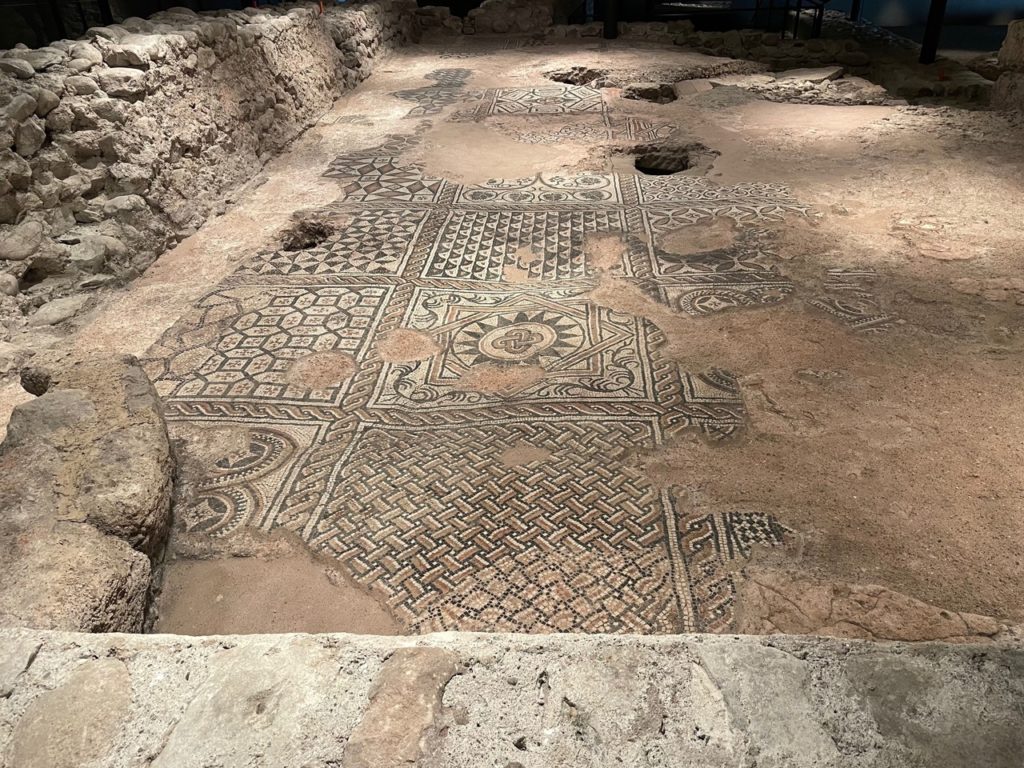

We also had the honor to see and sit on one of the world’s longest benches, the Banc de la Treille, and Emma treated me to an incredibly accurate and not-at-all-alternative history of the Mur des Réformateurs, or Wall of Reformers, that she definitely did not make up on the spot as we walked its length.
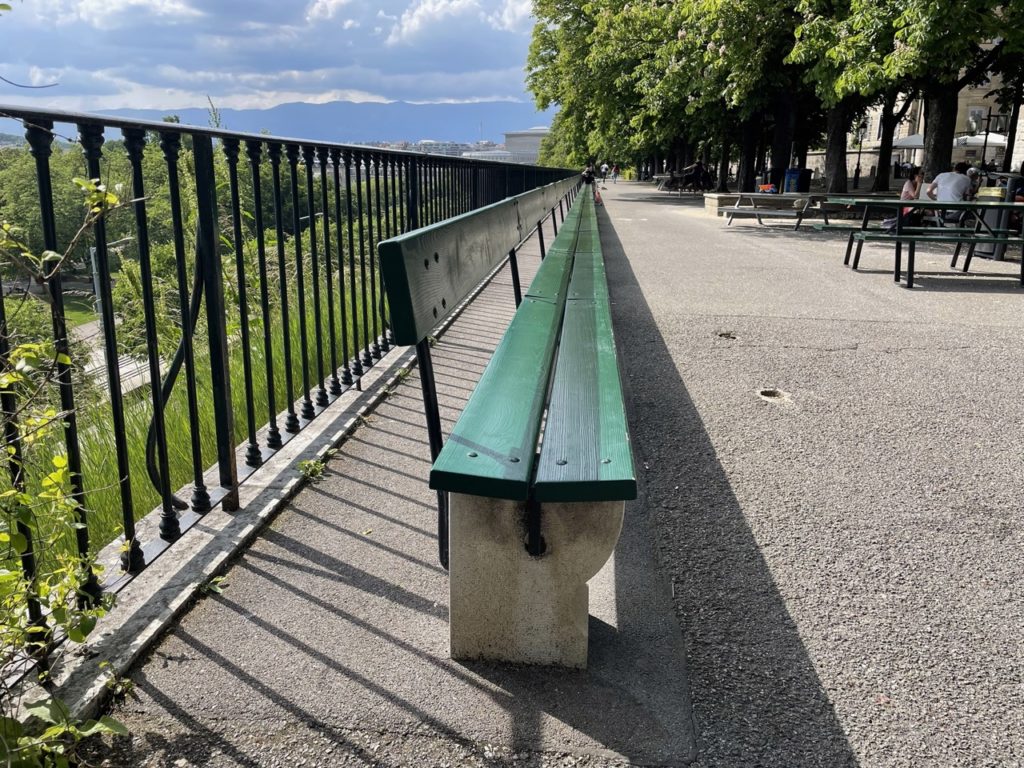
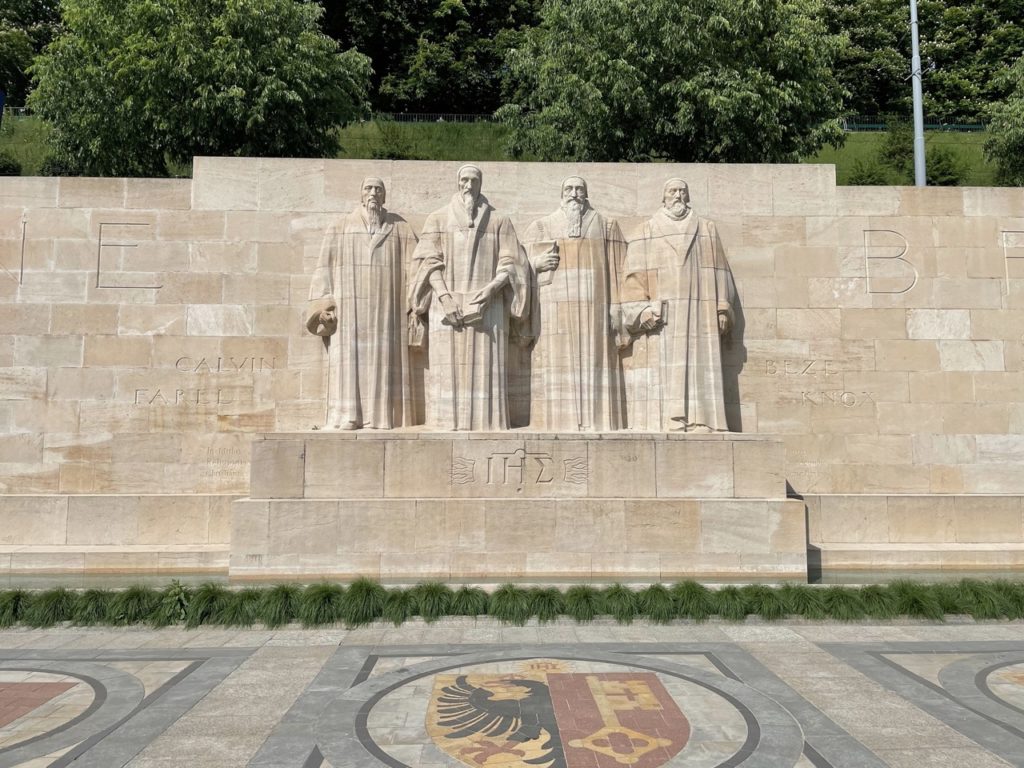
Finally, the time had come for us to sit back next to (but a safe distance from) the Jet d’Eau, sip on some ciders, and enjoy the view of the swans and the crystal clear waters of Lac Léman, or Lake Geneva.
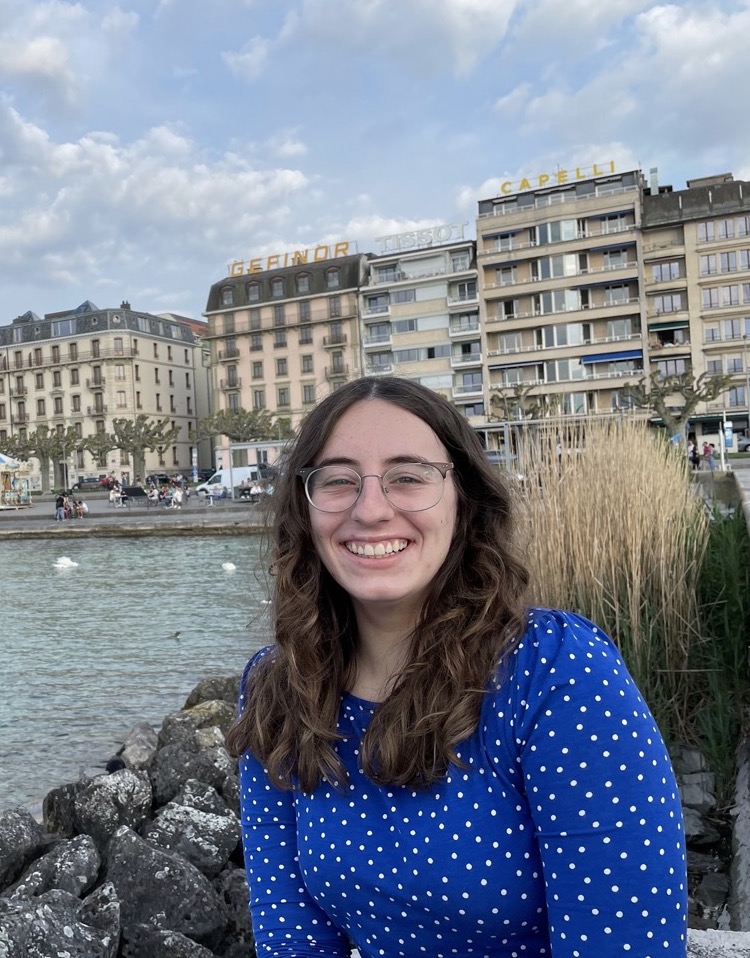
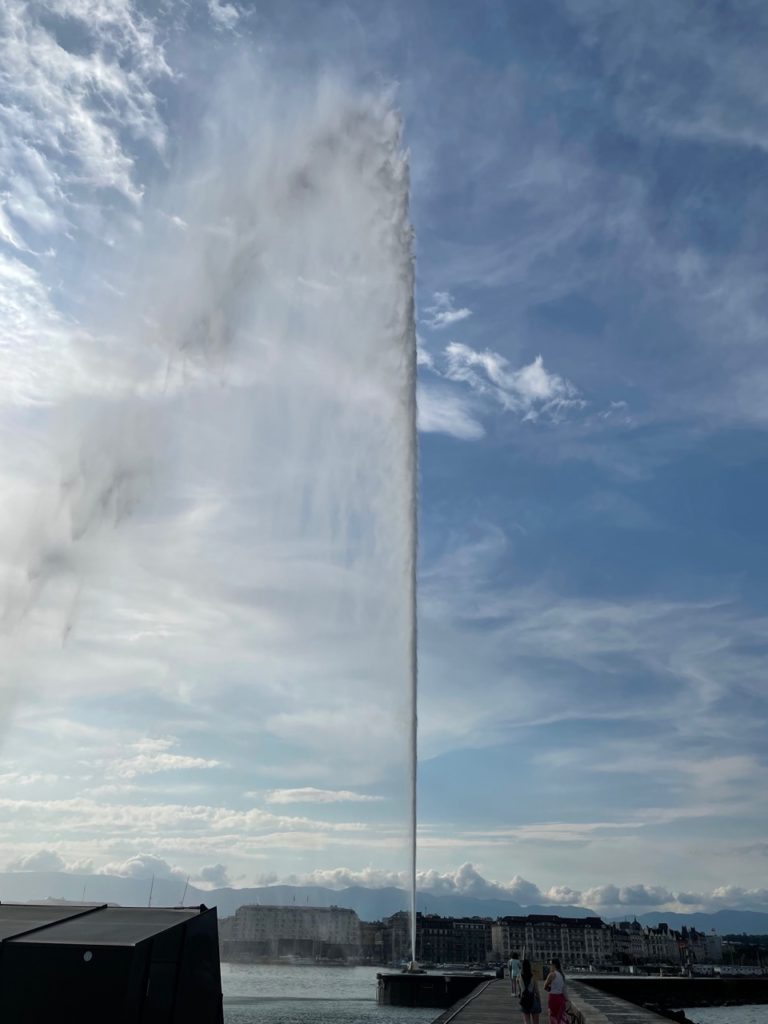
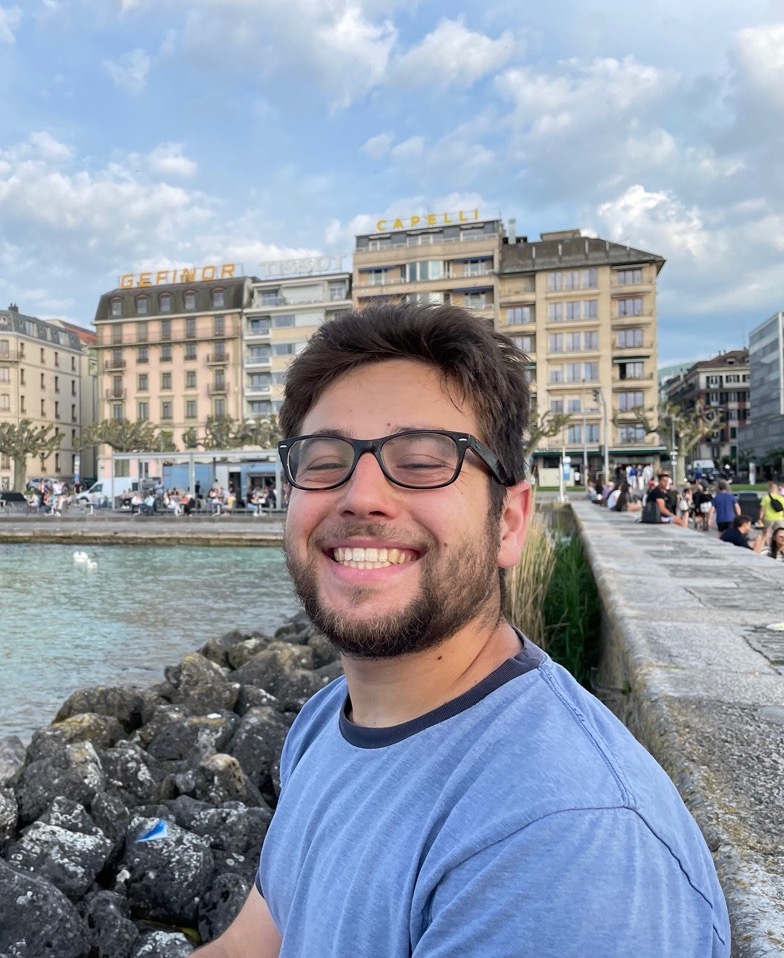
And just as our time in Geneva came to an end, so too did our time in Lyon. The last thing of note that we did in Lyon was visit the Confluence of the Rivers Rhône and Saône, a fascinating place where the central island of Lyon fades into the sea. (Except it’s not the sea, it’s the spot at which the two rivers join.) This spot feels a bit dystopian, especially when you notice the old railroad tracks that vanish under the water’s surface. Also, and more importantly, I met a duck.
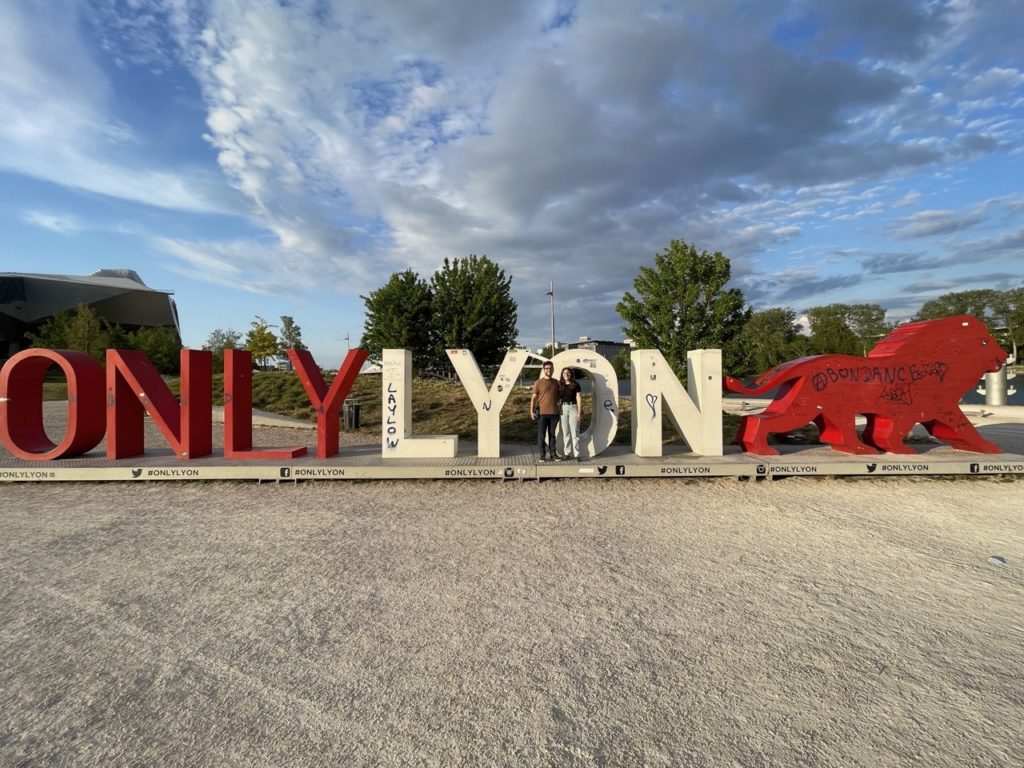

It’s hard to believe that we’ve already completed so much of this monumental adventure that in some ways feels like several distinct trips to Europe instead of one linear timeline. But I suppose that that’s a blessing because it means that we’ve made so many memories and enjoyed so many experiences in so many places during the past several months. We’ll be back soon with our next installment of The Travelogue, but seeing as Emma will be the one to write it, I’ll take this time to say thank you. Thank you, reader, for reading my (and our) words and thank you, Emma, for being the best travel partner for which I could have ever hoped. I knew that these three months together were going to be great. I’m sure that we’ll be back soon to share our thoughts and reflections from the next adventure to come, so I’ll see you next time.
In bittersweet joy and youthful exuberance,
A
Awwwh, so sweet Andrew. What a beautiful post taking us through, around, into and out of Lyon. Thank you!!!!
As for the place bellecour, it looks to me like it’s under construction, and that’s why it’s practically empty, or void of the natural scenes and happenings for a central place (pronounced “plahss”, of course). When I was in Lyon, I recall lots of construction (and that was about 30 years ago… I guess it’s about due for new re-construction).
Thank you again! In love and gratitude,
aunt Lily
Once again, Andrew, wonderful. Beautifully written — and you’re whetting our appetite! Like Lily, we were in Lyon many years ago (actually, to visit her), and this brings back both memories and the desire to be there again (and see what we’ve missed)! Now, dear ones, have a great completion of your trip!
With much love.
Bravo Andrew. Nous sommes heureux d’apprendre que la campagne française t’inspire pour écrire
un roman ! Il ne faut plus tarder maintenant pour le commencer. Nous sommes déjà dans l’attente de la parution avec une traduction française pour Jacques !
Tu nous as donné l’envie de visiter Lyon. Il nous faut chercher des catsitters …
Bises à vous deux